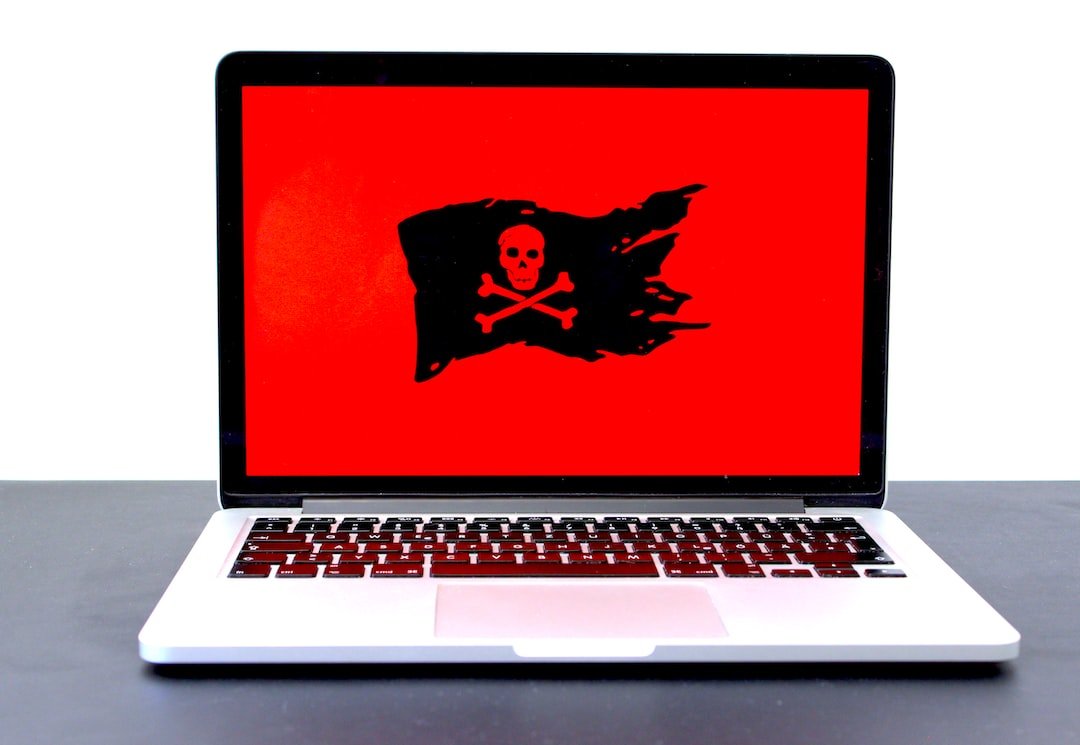Explore the world of malware, from its various types to significant incidents, and learn practical ways to protect your systems from such threats.
Section 1: An Introduction to Malware and Its Impact on PCI DSS Compliance
Section 2: Malware Types and Their Implications on PCI DSS Compliance
Section 3: Notorious Malware Incidents and Their PCI DSS Compliance Lessons
Section 4: Safeguarding Against Malware: The Role of PCI DSS
Section 5: Case Studies: Lessons Learned from Major Malware Incidents
Section 6: Protecting Against Malware Attacks with PCI DSS Compliance
Section 7: Educating Employees - The Frontline of Defense Against Malware
Section 1: An Introduction to Malware and Its Impact on PCI DSS Compliance
Malware, short for malicious software, represents a significant threat to computer systems worldwide. It comprises various harmful software types, such as viruses, worms, ransomware, and spyware, all designed to damage or illicitly access systems.
Within the framework of the Payment Card Industry Data Security Standard (PCI DSS), a security standard for organizations dealing with credit card information, the danger of malware is explicitly acknowledged. Specifically, Requirement 5 of PCI DSS stipulates that antivirus software must be installed on all systems commonly affected by malware.
The potential impact of malware on data breaches is considerable, particularly for organizations managing sensitive payment data. Cybercriminals often utilize malware to gain unauthorized access to a network and subsequently the cardholder data environment (CDE). Once they have breached the CDE, they can deploy more malware to extract data.
To counteract the risk of malware, PCI DSS emphasizes the importance of regular system updates, patches, and user awareness. Keeping systems updated is vital, as outdated systems can be more easily compromised. User training is equally crucial since many malware types, like phishing, require user interaction to infiltrate systems.
Comprehending malware, its types, and operations is crucial for maintaining PCI DSS compliance and securing cardholder data. This article will further explore malware types, notable incidents, and protective measures.
Section 2: Malware Types and Their Implications on PCI DSS Compliance
Malware, an umbrella term for multiple malicious software variants, encompasses numerous types, each with unique traits and operation mechanisms. The most prevalent include viruses, worms, trojans, ransomware, spyware, and adware.
- Viruses: Acting as harmful code fragments, viruses latch onto authentic programs and files, duplicating and propagating when the host program activates. Viruses can trigger extensive damage by corrupting data or causing system collapses, jeopardizing PCI DSS compliance by contaminating systems handling cardholder data, thereby endangering the cardholder data environment.
- Worms: Worms operate autonomously, not needing a host program or user action to multiply. They capitalize on network vulnerabilities to permeate systems, often leading to substantial network congestion and system resource exhaustion. Worms can obstruct the visibility and collection of network traffic, a pivotal element of PCI DSS Requirement 10.
- Trojans: Trojans masquerade as genuine software, deceiving users into loading and executing them on their systems, which enables them to pilfer sensitive information or gain unauthorized system access. They pose a serious threat to PCI DSS compliance, potentially leading to cardholder data exposure.
- Ransomware: This malware variant encrypts a victim's files, and the attacker demands a ransom to restore access. It threatens PCI DSS compliance by potentially barring access to cardholder data and causing prolonged system downtime.
- Spyware: Spyware covertly surveils and collects user information without their consent. Within the PCI DSS context, it can lead to unauthorized cardholder data access and other sensitive information.
- Adware: Though less malicious, adware can be disruptive, presenting unwanted advertisements and potentially compromising system performance or security.
Each malware type presents distinct security threats to an organization and its PCI DSS compliance. Hence, it's essential to establish a strong and comprehensive security strategy, including appropriate malware defense mechanisms, to safeguard the integrity and confidentiality of cardholder data.
Section 3: Notorious Malware Incidents and Their PCI DSS Compliance Lessons
The digital landscape is replete with cases of severe malware incidents, providing valuable lessons on the significance of robust security measures, including PCI DSS compliance.
- WannaCry Ransomware Attack (2017): This infamous ransomware exploited a Windows OS vulnerability, encrypting data on infected machines and demanding a ransom in Bitcoin. The attack disrupted several industries worldwide, emphasizing the necessity for up-to-date systems and software, aligned with PCI DSS Requirement 6.
- Equifax Data Breach (2017): In this incident, attackers exploited a web-application vulnerability, resulting in the exposure of personal data for almost 147 million individuals. This breach underscored the importance of timely patching of security vulnerabilities, an aspect addressed by PCI DSS Requirement 6.
- Stuxnet Worm (2010): A malicious computer worm, Stuxnet targeted supervisory control and data acquisition (SCADA) systems. This cyber weapon demonstrated the potential of malware in causing physical damage to infrastructures and highlighted the need for robust intrusion detection systems, a key element in PCI DSS Requirement 11.
- Zeus Trojan (2007): This trojan specialized in stealing banking information by keylogging and form grabbing. It reiterated the importance of protecting cardholder data in transit, as mandated by PCI DSS Requirement 4.
- ILOVEYOU Virus (2000): This virus tricked recipients into opening a malicious email attachment, which then forwarded itself to all contacts in the recipient's address book. It underlined the need for user awareness training, in sync with PCI DSS Requirement 12.
These incidents vividly illustrate the devastating consequences of malware attacks and the importance of stringent adherence to PCI DSS requirements. They serve as stark reminders of why organizations must prioritize protecting cardholder data, ensuring they maintain a secure network, and vigilantly monitor and test their networks, as stipulated in the PCI DSS standards.
Section 4: Safeguarding Against Malware: The Role of PCI DSS
In the face of the ever-evolving malware threat landscape, effective defense strategies are crucial. PCI DSS provides a robust framework for securing cardholder data and protecting against malware attacks. Here's how you can leverage its guidelines:
- Maintain a Firewall Configuration (PCI DSS Requirement 1): Firewalls form your first line of defense against malware attacks. A properly configured firewall can prevent unauthorized access, blocking malicious entities from infiltrating your network.
- Secure Cardholder Data (PCI DSS Requirement 3): Encrypting data at rest and in transit can significantly reduce the risk of malware attacks aimed at data theft.
- Maintain a Vulnerability Management Program (PCI DSS Requirement 5): Regularly updating and patching systems can shield you against malware that exploits software vulnerabilities. Anti-virus software, a key element of Requirement 5, is crucial in detecting, removing, and protecting against various malware types.
- Regularly Monitor and Test Networks (PCI DSS Requirement 11): Regular testing of security systems and processes can help identify potential vulnerabilities and ensure that your defenses against malware are up-to-date and effective. Intrusion detection systems (IDS) and intrusion prevention systems (IPS) can identify and block suspicious network activities, often associated with malware attacks.
- Maintain an Information Security Policy (PCI DSS Requirement 12): Employee awareness and training are essential in preventing malware attacks. A well-informed team can recognize potential threats, reducing the risk of successful phishing attacks or other human-related vulnerabilities.
By integrating these PCI DSS requirements into your cybersecurity strategy, you not only ensure compliance but also build a resilient defense against potential malware threats, ensuring the security of your cardholder data and maintaining the trust of your customers.
Section 5: Case Studies: Lessons Learned from Major Malware Incidents
While theoretical knowledge of malware threats is important, real-world examples can provide valuable insights into their potential impact and the effectiveness of preventative measures. Let's look at some significant malware incidents and how PCI DSS compliance could have helped to mitigate the risks.
- Target Corporation (2013): In one of the most infamous data breaches, Target suffered a malware attack on its point-of-sale systems, resulting in the theft of 40 million credit and debit card records. A third-party vendor's network credentials were stolen, providing the attackers with a gateway to Target's systems. The incident demonstrated the importance of maintaining a strong vendor management program, a key aspect of PCI DSS Requirement 12.
- WannaCry Ransomware Attack (2017): This global cyberattack affected hundreds of thousands of computers across 150 countries, encrypting data and demanding ransom payments. Many victims were using outdated Windows systems with known vulnerabilities. PCI DSS Requirement 6, which mandates regular system updates and patches, could have significantly reduced the attack's impact.
- Equifax Data Breach (2017): A web-application vulnerability allowed attackers to access the personal data of 147 million people. The breach could have been prevented by applying a patch that was available two months prior to the attack. This highlights the importance of PCI DSS Requirement 11, which mandates regular vulnerability scanning and penetration testing.
By learning from these incidents, organizations can better understand the importance of stringent security measures, including PCI DSS compliance, in preventing malware attacks and protecting sensitive data.
Section 6: Protecting Against Malware Attacks with PCI DSS Compliance
With the constant evolution of malware, implementing a robust cybersecurity strategy is a must for any organization. A significant part of this strategy is adhering to standards like PCI DSS, which offers a framework for protecting cardholder data from malware attacks.
6.1 Regularly Update and Patch Systems: PCI DSS Requirement 6.2 mandates that all system components and software are protected from known vulnerabilities by installing applicable vendor-supplied security patches. Regular updates and patches can protect against many common types of malware.
6.2 Deploy Antivirus Software: As part of PCI DSS Requirement 5, organizations should deploy antivirus software on all systems commonly affected by malware to protect against the most prevalent malware threats.
6.3 Implement Strong Access Control Measures: PCI DSS Requirements 7 and 8 focus on restricting access to cardholder data by business need-to-know and identifying and authenticating access to system components. This can help prevent unauthorized users from introducing malware into systems.
6.4 Regular Testing of Security Systems and Processes: PCI DSS Requirement 11 mandates regular testing of security systems and processes. This includes routine vulnerability scans and penetration tests that can help organizations identify potential weaknesses that malware could exploit.
6.5 Maintain an Information Security Policy: Requirement 12 of PCI DSS advocates for a strong security policy that includes an explicit focus on malware threats and steps to mitigate them.
Further details on PCI Compliance
Section 7: Educating Employees - The Frontline of Defense Against Malware
In the battle against malware, technology plays a significant role, but it's not the sole solution. People, particularly employees, can be the weakest link or the first line of defense, depending on the education and training they receive. The importance of fostering a culture of cybersecurity awareness within organizations is paramount, and it's a point of emphasis within the PCI DSS as well.
7.1 The Role of Employee Education: Understanding the threat landscape is the first step towards effective malware protection. Employees should be educated on the various forms of malware, their effects, and how they spread. This includes training on recognizing suspicious emails, websites, and software, which are common delivery mechanisms for malware.
7.2 PCI DSS and Employee Training: PCI DSS Requirement 12.6 mandates the implementation of a formal security awareness program to educate employees about the importance of cardholder data security. This training should also include information about recognizing and avoiding malware threats.
7.3 Regular and Ongoing Training: Cyber threats evolve constantly, so training should not be a one-time event. Regular and ongoing training sessions, updates on new malware threats, and simulated phishing exercises can all keep cybersecurity top of mind for employees.
7.4 Promoting Safe Online Behavior: Employees should be encouraged to practice safe online behavior, both at work and at home. This includes careful use of email and social media, avoiding suspicious downloads, and keeping personal devices used for work secure.
In the end, well-informed and vigilant employees can make all the difference when it comes to preventing a potentially devastating malware attack. Through the lens of PCI DSS, we can see how integral employee education is to an overall cybersecurity strategy.


